- Home
- T. J. English
The Savage City
The Savage City Read online
The Savage City
Race, Murder, and a Generation on the Edge
T.J. English
For George Whitmore
Contents
Introduction
Part I
1 Blood of the Lamb
2 Business as Usual
3 The Bowels of Brooklyn
4 “Get Those Niggers”
5 Getting Flopped
6 On the Button
7 Harlem Nocturne
8 Fathers and Sons
9 Fear
Part II
10 Black Power
11 “Holy Shit!”
12 Revolution
13 “Off the Pigs!”
14 Whitmore’s Last Stand
15 The Rot Within
16 Panther Justice
17 NEWKILL
18 Long Time Comin’
Epilogue
Notes
Sources
Searchable Terms
Acknowledgments
About the Author
Other Books by T.J. English
Credits
Copyright
About the Publisher
INTRODUCTION
THE STREETS OF New York City are saturated with blood.
This is more than a metaphor. In the largest city in the United States, generations of inhabitants have given their lives to the wheels of progress. They have been struck and killed by taxis, buses, or subway trains; thrown off buildings onto the sidewalk below; trapped in burning tenements and charred to death; blown up by exploding manhole covers; electrocuted by falling telephone wires; mugged, stabbed, or shot by depraved and desperate criminals; shot dead in the street by family members or other loved ones; shot dead by police officers; even incinerated by terrorists flying jetliners into the side of a building.
Untold thousands, perhaps millions, have fallen prey to the perils of municipal dysfunction, to the growing pains of a city forced to adjust to violent demographic shifts, internal hostilities, wrenching social changes anticipated by no one.
In recent years, New York has been promoted as the Safest Big City in America. This claim is made without irony, as if the previous fifty years of the city’s existence were nothing more than a bad dream.
Yet it was not so long ago that the city was perched on the brink of self-immolation. Beginning in the early 1960s, a mood of uncertainty and menace entered the bloodstream of the great metropolis. The result was a spiraling crime rate unlike anything the city had seen before. For the first time since the years of the Great Depression, the violence became a daily reality throughout the five boroughs, something you could reach out and touch. Citizens walking to the corner deli after dark were mugged or shanked for the change in their pockets. Dope fiends, armed and dangerous, climbed over rooftops and down fire escapes to steal valuables from apartments, offices, and cars. Rapists walked around with their dicks hanging out. There was all manner of homicide, the plaintive sound of sirens in the night, the rancid smell of a city that had begun to rot.
This book covers the ten-year period when New York City began its now-legendary descent into mayhem. From 1963 to 1973, crime became a viral infection that gripped the body politic. The shocking upsurge in predatory violence led to fear, and that fear led to more violence. Free-flowing hostility among the city’s inhabitants fueled the paranoiac mood. Longtime residents sensed that the city was entering a period of transition and were troubled by the prospect. The best that could be said was that New York was going through some kind of evolution, pushing itself toward something—but what? Urban hell on earth? Armageddon? Better days in the afterlife?
The city had always been a complex organism. It had endured its share of growing pains before, often involving the cycles of violence and fear that were the consequence of an evolutionary process. A city could attempt to manage and control the potential for crime and danger within its city limits, but no municipal government, no citizens action group, can fully foresee the larger trends that shape an urban universe from the outside. The era of turmoil that began in 1963 had many internal factors—some of which will be detailed in this book—but one event that would reshape the city in surprising ways occurred hundreds of miles away, in a dusty hamlet outside the town of Clarksdale, Mississippi.
On October 2, 1944, just outside town on Highway 49, a crowd of people gathered on a modest plantation to see the very first public demonstration of a working, production-ready mechanical cotton picker. At that moment, two hundred and forty miles from midtown Manhattan, a demographic bomb exploded that sent seismic waves out across the United States. Every region and most cities would be affected, but none more so than northern industrial centers like New York.
For generations, cotton picking in the South had been a source of employment and servitude for the descendants of slaves, who had survived all manner of human horror to find themselves at the mercy of the system known as sharecropping. The workers who spent long, back-breaking days in the fields, picking cotton by hand, received abysmal pay—sometimes as low as five dollars a week—but it was a means of subsistence for those whose forebearers had been denied the forty acres and a mule promised to them after Emancipation.
The mechanical cotton picker was a godsend to the planters. An efficient field hand could pick twenty pounds of cotton in an hour. A mechanical cotton picker harvested as much as a thousand pounds—two bales—in that same time. One Mississippi plantation owner estimated that picking a bale of cotton by machine cost him $5.26, while picking it by hand cost $39.41. Each machine did the work of fifty people.
The mechanical cotton picker made sharecropping obsolete. With their primary form of livelihood eliminated virtually overnight, rural African Americans in the South had little choice but to head out into the great unknown in search of a new life. Most headed north to the Promised Land of industry and factory employment. This great black migration, since chronicled and studied in countless works of history, was one of the largest and most rapid internal movements of people in history—perhaps the greatest such shift not caused by a natural catastrophe or immediate threat of disease or starvation.
In New York City, the waves of black migrants from the South began flooding in by the late 1940s. New York had Harlem, the preeminent African American neighborhood and cultural center in the United States. But the infusion of migrants over the next twenty-five years was far too vast for any one neighborhood to absorb. Blacks began settling on the fringes of white working-class neighborhoods throughout the city’s five boroughs, but nowhere was the transformation more startling than in Brooklyn.
The Borough of Churches—which had been its own city until its incorporation into New York City in 1898—had been home to generations of Irish, Italians, and Eastern European Jews. Now, older residents who had lived in Brooklyn since the 1920s, 1930s, or 1940s were shocked to find their neighborhoods on the receiving end of a massive migration of poor, desperate Negroes from the South—along with a significant migration of Puerto Ricans, who were fleeing the impoverished Caribbean island, part of the U.S. commonwealth. Some lower-middle-class white communities in Brooklyn already suffered from poverty and municipal neglect; the latent, free-floating bitterness among their residents soon turned to aggressive anger toward the alien horde of “niggers” and “spics” who were—seemingly—being dumped onto their streets by the thousands each month.
Some whites stayed and resisted the tides of change, but most fled. In three Brooklyn neighborhoods—Brownsville, Bushwick, and East New York—the transition was catastrophic. Over a five-year period in the early 1960s, the neighborhood of East New York went from being 80 percent white to 80 percent black and Puerto Rican. There were no social programs to deal with this unprecedented shift in the community’s ra
cial composition. The new arrivals were met mostly with a potent mixture of fear, hostility, and outright racism—a combination the Negroes found all too familiar.
There was no Ku Klux Klan in New York. There was something more overt: the New York City Police Department. By the early 1960s, the NYPD had evolved into a largely autonomous institution, whose officers and beat cops did things their own way. For generations, when it came to dealing with black people, that way generally involved brute force. Over the next ten years, hostilities between blacks and the police in New York would finally come to a head, with casualties on both sides and severe repercussions for the city as a whole.
The overwhelming majority of the police department was composed of working-class white men who lived in Brooklyn and elsewhere in the boroughs. Some officers shared the common sense of fear and displacement at the growing influx of desperate, often illiterate Negroes arriving in huge numbers. Beyond race, there was the issue of poverty: filthy living conditions, large groups of unemployed teens hanging out on the streets, lewd public behavior, and, of course, all manner of crime.
In the book My Father’s Gun, Brian McDonald traces three generations of cops in his own family and how they were affected by the city’s shifting racial landscape. The McDonald family had lived in the mostly Irish Catholic Fordham Road section of the Bronx for two generations—until 1956, when they picked up and moved to the suburban bedroom community of Pearl River, in Rockland County, sixty miles north of the city. The road to Rockland County was well worn: between 1950 and 1960, more than fifty thousand people moved north from the city. The overwhelming majority were white, many of them police officers who had concluded that the urban jungle, increasingly overrun by blacks and Puerto Ricans and rising crime, was no longer for them.
At the time, New York City cops were still required to live within city limits. This law dated back to the Great Depression, when it had been championed by James J. Lyons, the Bronx borough president, under a rallying cry of “Local jobs for local boys.” Before long, however, many cops and firemen were flouting the so-called Lyons Law by establishing fake residences in the city. Brian McDonald’s father, a first-grade detective stationed back in the old neighborhood, got around the law by using his sister-in-law’s Bronx address on tax returns and other official papers. Later, the law was changed to accommodate the growing number of cops—many of them high-ranking members of the department—who chose not to live in the city where they worked.
McDonald describes witnessing his father come home from work each day more and more disgusted and alienated by the city he once loved. He would pour himself a stiff drink, sit in a chair, and grumble angrily about the “Mau Maus” and “goddamn junkies” who had turned his precinct into a “jungle.” Lieutenant McDonald’s disgust was hardened by his own isolation: in the upstate community where he now lived, he was surrounded largely by other white cop families who’d fled the city just as he had. Bitterness seethed among these exiled cops: to them, the city seemed more alien and unsalvageable with each passing day.
Relations between cops and blacks in the city had always been tense. New York was a place of extreme wealth and dire poverty, of glittering Manhattan financial centers and teeming slums. It was the job of the NYPD to make sure these two universes did not overlap. There were no Jim Crow segregation laws in New York, as there still were in the South, but unofficial segregation was a fact of life. A significant aspect of policing in relation to blacks and Puerto Ricans was to make sure they “stayed in their place,” both figuratively and literally. There were few black officers on the force, and even they were viewed with suspicion by residents.
The reality of police repression was stark. African Americans suffered disproportionately from a wide range of abuses, including indiscriminate searches, station house beatings, and coerced “confessions.” They knew that a cop could stop them anytime, and there was little they could do about it. Nothing filled black citizens with dread more than being led into a police station house, and by the late 1950s those stations were increasingly run by suburban white men, long since estranged from the city they policed.
Black citizens knew what most whites were unaware of or chose not to know: in police custody, black men were beaten with phone books and rubber hoses. Police violence and malevolence against black people were business as usual.
As far back as the 1920s, the National Association for the Advancement of Colored People (NAACP) had begun lodging complaints of police brutality against the NYPD. These complaints increased greatly in the post–World War II years, when a number of black servicemen were shot and killed by New York police. To see veterans victimized after serving their country in the war was particularly galling to black advocacy groups, but the violence did not end there. From 1947 to 1952, forty-six unarmed African Americans were killed by police officers in the state of New York. Only two whites were killed by police in the same period. When it came to black people, the policy seemed to be to shoot first and ask questions later.
This rampant police violence did not escape public notice, but with complaints came consequences. After one of the city’s few Negro councilmen referred to police brutality in New York as “lynching, Northern style,” he was accused of being a Communist by white political leaders and newspaper editorialists. Throughout the 1950s, white supremacists sought to undermine the struggle for civil rights by interpreting it through the prism of the cold war. There must be some foreign element, the thinking went, behind these Negroes and white liberals who were agitating for civil rights. Most blacks saw these accusations for what they were: racism by another name.
Despite this widespread abuse, by the mid-1950s there was an almost eerie complacency among the city’s black population. With the neighborhood of Harlem as its African American center, New York had always been able to put forth the image of a thriving black middle class. Many black business leaders and politicians had a vested interest in maintaining this image. A full-scale riot occurred in Harlem in 1943, which was instigated by a police officer’s mistreatment of a black female in the street, but since then black protest had been muted. The promise of prosperity in the postwar years seemed real enough to stave off social protest in the big city.
Yet there were signs of subterranean strain within the city’s underclass, rumblings that grew louder and more destabilizing as the Great Migration burgeoned. Southern blacks brought news of unprecedented civil rights protests in places like Mississippi and Alabama. An unassuming black woman named Rosa Parks had refused to sit in the back of a city bus in Montgomery, which led to an organized boycott by black preachers and civil rights workers. Something was happening down South: blacks were standing up for themselves, engaging in nonviolent confrontation as a way to expose the basic inhumanity and moral corruptibility of white supremacy.
Most white residents of New York City knew little of the civil rights movement in the South. Reports about it in the city’s newspapers were limited, and television had not yet emerged as the instant communicator it would become. Images of police fire hoses, billy clubs, and attack dogs being unleashed on peaceful protesters were just beginning to penetrate the national consciousness. But the city’s black residents—especially those recently arrived from the Deep South, with family still there—had begun to feel the earliest inklings of righteous indignation. And these emotions informed an incident on April 14, 1957, that initiated New York City into the modern struggle for civil rights. It was the kind of encounter that would become all too commonplace in the years ahead, but in the year 1957 it was an unusual situation.
On that day, near the intersection of 125th Street and Seventh Avenue in the heart of Harlem, a crowd gathered to watch a fight between two black men. Several police units were dispatched to quell the disturbance. When the cops arrived, following their usual practice when dealing with disturbances of this size in the ghetto, they began indiscriminately clubbing onlookers who were slow to disperse.
One Harlem resident, Hinton Johnson, was horri
fied to see the police beating one innocent bystander. “You are not in Alabama,” he reportedly told a cop. “This is New York.” The cop turned on Johnson, clubbing him over the head, cracking his skull and knocking him unconscious.
More cops arrived on the scene, but as the crowd of residents grew more hostile, the police retreated to the Twenty-eighth Precinct station house—where they were startled to find a menacing mob gathering in front of the building.
Hinton Johnson was a black Muslim, known to his congregates as Johnson X. Many of the Irish Catholic cops in the fray that afternoon probably didn’t even know what a Muslim was, much less that a group calling itself the Nation of Islam had taken root in Harlem. Johnson X was a member of Mosque Number Seven, the largest Muslim mosque in the country, located in a building at 116th Street and Seventh Avenue, not far from where the police beating had occurred.
The leader of the mosque was a young Muslim preacher named Malcolm X. When Malcolm received word of the beating—and learned that Johnson X had been transferred to the station house, bleeding and unconscious—he set off to find him.
Within minutes, Malcolm X arrived at the Twenty-eighth Precinct to serve as a negotiator between the police and the community. The cops were demanding that the protesters disperse from around the station house, but the angry residents were refusing to budge. A member of the police negotiating team, Walter Arm, the NYPD’s public relations officer, opened the meeting by saying that the presence of both the captain of the precinct and a deputy commissioner “indicates how much concern the police department has for this situation. However, I’d like to say that the police of the city of New York can handle any situation that arises in Harlem, and we’re not here to ask anybody’s help.”

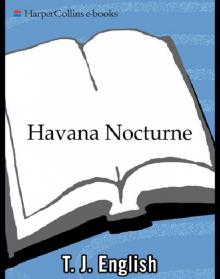 Havana Nocturne
Havana Nocturne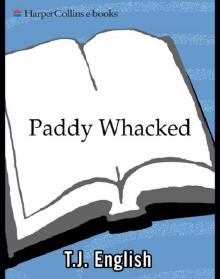 Paddy Whacked
Paddy Whacked American Gangsters
American Gangsters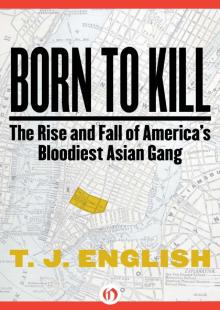 Born to Kill
Born to Kill Westies
Westies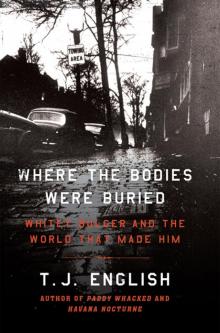 Where the Bodies Were Buried
Where the Bodies Were Buried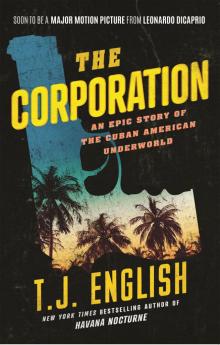 The Corporation
The Corporation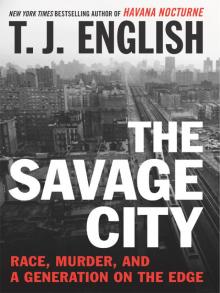 The Savage City
The Savage City